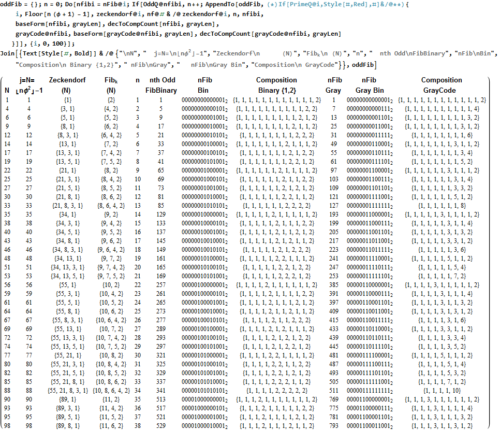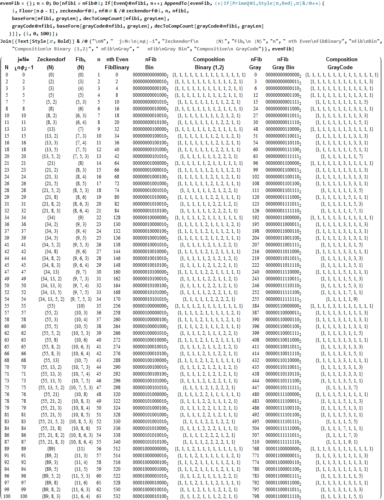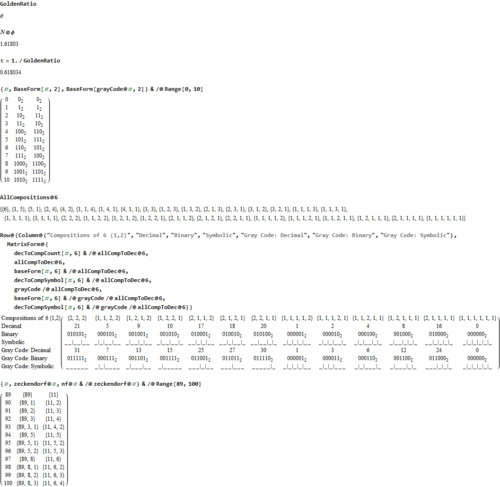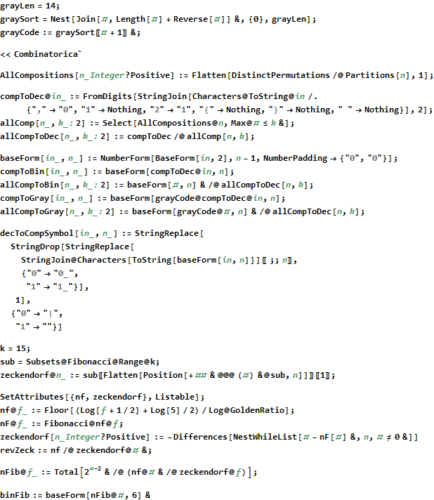Please see my latest paper here.
It adds information related to my previous blog post here.
Abstract: Previously, a determination of the relationship between the Natural numbers (N) and the n’th odd fibbinary number has been made using a relationship with the Golden ratio phi=(Sqrt[5]+1}/2 and tau=1/phi. Specifically, if the n’th odd fibbinary equates to the j’th N, then j=Floor[n phi^2 – 1]. This note documents the completion of the relationship for the even fibbinary numbers, such that if the n’th even fibbinary equates to the j’th N, then j=Floor[n phi]-1, starting at j=0 for n=1. Alternatively, starting at j=2 for n=1, then j=Floor[n phi + tau].
Title:Even FibBinary Numbers and the Golden Ratio
Authors: J Gregory Moxness
Comments: Dec 31 2018, 5 pages, 4 Figures.
Subjects: Combinatorics
Below is a listing of the N integers represented by their 38 odd FibBinaries, along with the binary and Gray code Compositions.

Below is a listing of the first 63 N integers represented by their even FibBinaries, along with the binary and Gray code Compositions.

Code output examples:

Mathematica Code Snippets:



